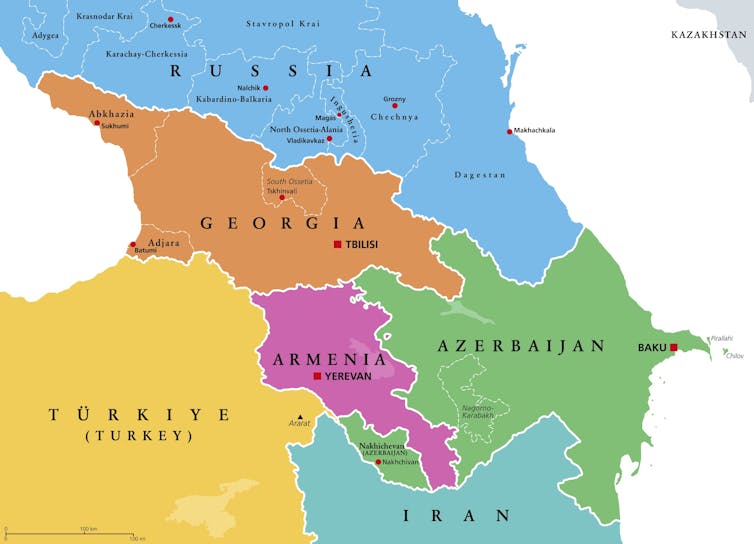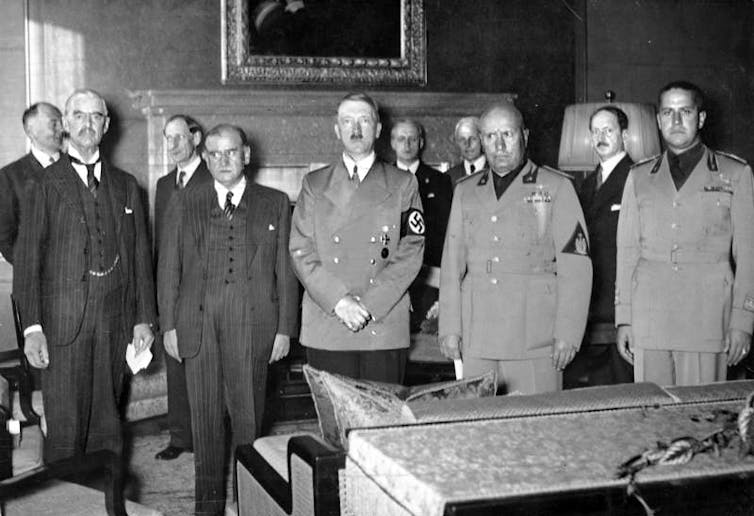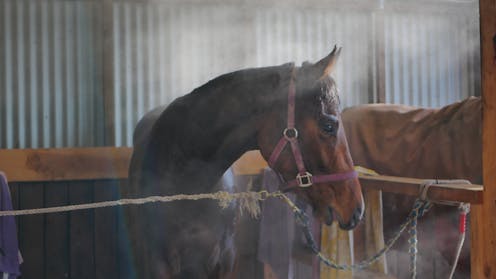Source: The Conversation – UK – By David Mead, Professor of UK Human Rights Law, University of East Anglia
The proscription of Palestine Action – banning membership or support for the organisation on the ground that the home secretary believes it is “concerned in terrorism” – has led to hundreds of arrests, two legal challenges and many questions about the state of protest rights in the UK.
More than 500 people were arrested last weekend, the overwhelming majority for displaying a placard in support of a proscribed organisation. This is an offence according to section 13 of the Terrorism Act 2000, and carries a sentence of six months or fine. All have been released on bail, save for a handful who refused to give their details to police.
The decision to proscribe has arguably affected the free speech rights of the group and its supporters. This issue is why a High Court judge, Mr Justice Chamberlain, has granted Palestine Action permission to challenge its proscription by means of judicial review.
In his view, it was reasonably arguable that the proscription order amounted to a disproportionate interference with articles 10 and 11 of the European convention on human rights. These guarantee a right to free speech and peaceful assembly.
Disproportionate governmental decisions – that do not properly balance an individual’s rights against the wider public interest (in, say, national security) – are unlawful in the UK under the Human Rights Act 1998.
If the court at the full hearing in November agrees, and decides the proscription order does not strike a proportionate balance, it will almost certainly quash it. The effect of striking down an order such as here is to take the law back to Day Zero, as if it had never been passed.
What will happen to those arrested?
The High Court has had the power since 2022 to make a quashing order effective only from the date of the decision. If that happened here, any previous convictions would stand.
But if, as is more conventional, the quashing order covered the entire period of proscription, anyone still in the criminal justice system and yet to be found guilty would have their charges dropped. It would be impossible to continue a prosecution if in law Palestine Action had never been proscribed at all.
More interesting would be those who have been convicted between July and November. Their convictions or fines are not automatically discharged with the quashing order.
There is a trial of three supporters set for September. An instructive parallel here are the recent convictions of various Just Stop Oil and Extinction Rebellion activists.
Several were convicted under “serious disruption” regulations, which were ruled unlawful by the Court of Appeal in May. The human rights advocacy group Liberty has called on the CPS to review all convictions under the older, lower standard.
Broad definition of terrorism
Palestine Action has committed serious property damage to influence the government or to intimidate arms manufacturers into stopping, and has done so for a political or ideological cause. That is almost certainly within the UK’s definition of terrorism, which illuminates the breadth of that term and the uncertainties surrounding its application.
Palestine Action’s co-founder, Huda Ammori, initially tried to challenge the proscription order in July, through an application seeking interim relief preventing the order coming into force. In this judicial review, Chamberlain thought the terrorism definition capable of covering Palestine Action. His decision in favour of the home secretary was upheld by the Court of Appeal later that day.
But the unprecedented application of counter-terrorism law to a direct action group highlights how the UK’s terrorism definition is now much wider than under the previous law. That law defined it as “the use of violence for political ends, including any use of violence for the purpose of putting the public or any section of the public in fear”. MI5 advice to the Home Secretary and presented to the court in July acknowledge the novelty of proscribing a group that did not use or advocate violence to achieve its political ends.
The current law also requires no proof that someone is actually made fearful or terrorised. Other states have higher bars – Ireland requires serious intimidation – or seem to generally manage without laws and powers to deal with terrorism, as is the case in Germany.
Legal commentators have pointed out for years the possibility of terrorism law capturing direct action protesters. In my own book in 2010, I offered the view that an environmental group that destroyed a farmer’s GM crop field would probably mean they came within the terrorism definition.
It’s worth pointing out that while the Terrorism Act creates the offence of support for a proscribed group, it does not require officers to arrest. They must exercise discretion. In this case, that includes a consideration of the free speech rights of hundreds of protesters.
It would have been perfectly lawful, albeit politically contentious, to have decided arrests were not warranted, given that there was no obvious and direct harm posed to national security (or to others) by the peaceful expression of what is, currently at least, an unlawful view.
We can see such discretion in Northern Ireland, where PSNI do not regularly arrest those waving flags proclaiming support for UVF or IRA – both long-term proscribed organisations.
Seeing such depictions can only reinforce the views of those who argue the clampdown on Palestine Action is politically motivated and partial. And as law professor Geoff Pearson suggests, the longer the laws are in force and police continue to enforce them to the degree witnessed last weekend, the more police legitimacy will be called into question.
Finally, the mass arrests reflect what I consider a very real problem in protest law: the limitations of effective, timely enforcement. Being released after 24 hours does not remedy the fact you were removed from your protest site. An effective right of protest is about not just the law, but the reality on the ground.
Want more politics coverage from academic experts? Every week, we bring you informed analysis of developments in government and fact check the claims being made.
Sign up for our weekly politics newsletter, delivered every Friday.
![]()
David Mead is affiliated with The Labour Party and UCU, and serves on Liberty’s Policy Council
– ref. Palestine Action arrests: what happens next, and what it tells us about the breadth of Britain’s counter-terrorism laws – https://theconversation.com/palestine-action-arrests-what-happens-next-and-what-it-tells-us-about-the-breadth-of-britains-counter-terrorism-laws-263080












